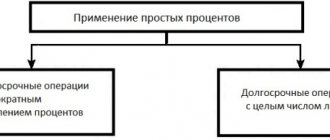Workers hired to perform seasonal work (according to Article 293 of the Labor Code of the Russian Federation) have the same social guarantees as full-time employees. They have the right to sick leave, vacation and vacation compensation upon dismissal. An employment contract is concluded with seasonal employees for a period of work, which usually does not exceed 6 months according to generally established rules, but in some industries a longer duration of seasonal work is possible. Most often, workers from agriculture, road transport and construction infrastructure, geological exploration, etc. are hired for seasonal work.
Features of leave for a seasonal worker
A contract for seasonal work is essentially a type of fixed-term employment contract. Therefore, when concluding it, the same rules and regulations apply as for vacations under fixed-term contracts, but with some features.
The main difference between the leave of seasonal employees is that it is calculated and provided in working days (Article 295 of the Labor Code), and not in calendar days, as with annual leave for other employees.
For each month worked, 2 working days are provided. However, employees engaged in seasonal work are provided with paid leave on a general basis: after 6 months of work. Therefore, there are 3 options for providing leave:
1. In advance, before the expiration of the 6-month period.
2. In the form of monetary compensation for unused vacation at the end of the contract.
3. The application for leave is written at the very end of the fixed-term contract, and then the last working day and the expiration date of the employment contract is the last day of leave.
The calculation of vacation periods, the duration of which is calculated in working days, also takes into account working days, not calendar days. The average daily earnings are determined by dividing all payments accrued to a seasonal worker for the period of his work by the number of working days within a given period of time according to the calendar of a 6-day working week, even if the employee works on a “five-day” basis (Article 139 of the Labor Code). This means that Sundays are not included in the number of vacation days and are not paid.
NTVP "Kedr - Consultant"
LLC "NTVP "Kedr - Consultant" » Pravo-info » Articles from magazines » SEASONAL WORK: LEARNING FEATURES
Based on materials from the publication “The Main Book”
M.G. Sukhovskaya, senior lawyer
For some types of work, such as harvesting and logging, it is not economically profitable to employ people permanently. But you can hire seasonal workers. Labor relations with such employees have a number of nuances.
Not all temporary work is considered seasonal
The fact that work is not performed year-round due to natural conditions is not enough to consider such work seasonal.
It must also be named in one of the special lists.
Such lists are contained <1>:
- or in regulatory legal acts, including acts of the former USSR, in force to the extent that does not contradict the Labor Code <2>;
- or in industry-specific federal agreements.
Reference. Seasonal work is work that, due to climatic and other natural conditions, is performed during a certain period - season (for example, sowing, fishing, seafood production and processing, production of canned fruits and vegetables) <1>.
As a rule, the season does not exceed 6 months, but in cases directly provided for by industry (inter-industry) federal agreements, it can last more than six months.
Here are examples of the types of work that are truly seasonal:
- transportation of passengers in resort areas in the summer-autumn period, as well as transportation of passengers to recreation areas, holiday villages, and gardening associations (May - October) <3>;
- timber rafting (discharge of wood into water, primary and raft timber rafting, sorting on water, rafting and rolling of wood from water, loading (unloading) of wood onto ships) <4>;
- work on protecting forests from fires, reproducing forests, and protecting them from the spread of harmful organisms <5>;
- production, transmission and sale of thermal energy (during the heating season);
- mowing weeds;
- work in the wardrobe <6>;
- icebreaking work and snow and ice removal work;
- topographical, land management, geological, geological exploration work, as well as field work associated with all research and survey work <7>.
Attention. The Ministry of Labor believes that in temporary or seasonal workplaces it is also necessary to carry out a special assessment of working conditions during the period when production activities are carried out at them <8>.
It turns out that if a workplace is newly created and it does not exist for more than one season, it will still have to be specially assessed.
Nuances of a “seasonal” employment contract
Firstly, such an agreement must include a provision regarding the seasonal nature of the work. If this condition is not met, then at the end of the season it will be very difficult for the employer to prove that the employee was hired only for a certain period.
And he can apply for a permanent job <9>.
This is what a condition regarding the seasonal nature of work may sound like.
An employee is hired for a seasonal job at Auto-Chic LLC as a bus driver.
Secondly, the employment contract must indicate the duration of the season, at the end of which the contract terminates. After all, a “seasonal” employment contract is a fixed-term one, and the validity period of a fixed-term contract is one of its mandatory conditions <10>.
The duration of the season can be viewed:
- or in an industry agreement. For example, the agreement on road and urban ground passenger transport states that the season for transporting passengers to their dachas is from May to October;
- or in a regulatory act of a regional (local) government authority. Thus, for work on the production, transmission and sale of thermal energy, the season is the heating period, and the duration of such a period is approved by regional executive authorities <11>.
If neither the agreement nor any regulatory act says anything about the duration of the season or the procedure for determining it, then the employer can determine its duration himself by indicating:
- or a specific calendar period, if possible (for example, April - September);
- or an event whose occurrence marks the end of the season (for example, before the end of the salmon run).
As for the probationary period for “seasonal workers,” it can be established if you hire a seasonal worker for a period of 2 months or without specifying a specific calendar period of time. In this case, the duration of the test cannot exceed 2 weeks. If the validity period of a “seasonal” employment contract is less than 2 months, then the test cannot be established at all <12>.
Advice. If you want to hire a person for a temporary job (for example, as a cashier at a summer amusement park), but this work is not mentioned anywhere as seasonal, then, depending on the specific situation, conclude with him:
- or a regular fixed-term employment contract <13>;
- or a fixed-term employment contract for the duration of temporary (up to 2 months) work <14>.
Otherwise, disputes with seasonal workers <15> are possible.
How to apply for a job as a “seasonal worker”
There are no special features here. Unless in the employment order <16> it is necessary to indicate the seasonal nature of work activity.
A “seasonal employee,” like any other employee who has worked for more than 5 days, needs to make an entry in the work book about being hired (and generally make one if the employee is employed for the first time) <17>. In this case, the entry will be normal, without any indication of the seasonal nature of the work.
Attention. Seasonal workers have all the same labor rights as other employees, including the right to sick pay and compensation for unused vacation upon dismissal.
Are “seasonal workers” entitled to vacation?
Vacation is based on 2 working days for each month of work (and not 28 calendar days per working year, as for ordinary employees) <18>. Therefore, if we assume that the maximum season is usually 6 months, then an employee who has worked a season of this length can qualify for 12 working days of leave.
Another question is that due to the short-term nature of their employment relationships, “seasonal workers” usually do not take vacations. The employer, as a general rule, is not obliged to provide employees with annual paid leave until the end of 6 months of continuous work. Therefore, upon dismissal, “seasonal workers” are usually paid monetary compensation for unused vacation.
True, such an employee can agree with the employer on vacation followed by dismissal <19>. And in this case, the “seasonal” employment contract will not be considered concluded for an indefinite period.
The average daily earnings for calculating compensation for unused vacation (or payment of vacation pay - in the case of granting real vacation to a “seasonal worker”) is calculated according to the rules provided for payment of vacations provided in working days.
If during the period of work under a “seasonal” employment contract an employee was ill and was paid temporary disability benefits, then the period of illness and the amount of benefits paid for this period must be excluded when calculating compensation for unused vacation (vacation) <20>.
In this case, the average daily earnings will be calculated as follows:
Average daily earnings = Amount of accrued wages for the season and other payments included in the calculation / Number of working days according to the calendar of a 6-day working week per hour worked
On the dismissal of seasonal workers
“Seasonal workers” are subject to the rules of the Labor Code of the Russian Federation on fixed-term employment contracts. This means that such employees must be notified in writing of the upcoming termination of the employment contract due to the expiration of its term. This must be done no later than 3 calendar days before dismissal <21>.
But if you don't do this, it's okay. The employment contract with the seasonal worker must still end at the end of the season. The main thing is to timely formalize the termination of the employment relationship (issue a dismissal order, make payments, issue the necessary documents) <22>. Otherwise, a “seasonal” employment contract will turn into a contract with an indefinite duration <23>.
If a seasonal worker himself wants to resign early, he must notify the employer in writing of his dismissal just 3 calendar days in advance <24>.
When dismissal due to liquidation of an organization or reduction in headcount (staff), seasonal workers must be notified not 2 months in advance, like ordinary workers, but 7 calendar days <25>. At the same time, they are entitled to severance pay in the amount of two weeks’ average earnings (and not one month, as in the general case).
The employer is not obliged to maintain the average salary for “seasonal workers” during the period of employment <26>.
* * *
In conclusion, let us note this. Organizations whose activities appear in the List of Seasonal Industries <27>, in Column 10 of Section 3 “Information on the periods of work of insured persons” of the SZV-STAZH form must enter the code “SEASON” for seasonal workers. But only on the condition that these employees have worked a full season. Then, when calculating the insurance period, the duration of the period of work in the corresponding calendar year will be a full year <28>.
———————————
<1> Art. 293 Labor Code of the Russian Federation
<2> art. 423 Labor Code of the Russian Federation; List of seasonal work, approved. Decree of the People's Commissariat of the USSR dated 10/11/32 N 185; List of seasonal industries, approved. Government Decree No. 498 dated July 4, 2002
<3> clause 3.13 of the Federal Industry Agreement on Automobile and Urban Ground Passenger Transport, approved. All-Russian Trade Union of Automobile Transport and Road Facilities Workers, Non-profit organization "Russian Motor Transport Union" 10/24/2013
<4> clause 2.A of the Industry Agreement on the timber industry of the Russian Federation for 2021 - 2021, approved. All-Russian industry association of employers “Union of Timber Industrialists and Timber Exporters of Russia”, Public organization “Trade Union of Forestry Workers of the Russian Federation”
<5> clause 31 of the Industry Agreement on Forestry of the Russian Federation for 2016-2019, approved. Rosleskhoz, Trade Union of Forestry Workers of the Russian Federation 07/01/2016
<6> clause 3.8 of the Industry Tariff Agreement in the housing and communal services of the Russian Federation for 2017-2019, approved. All-Russian industry association of employers “Union of Utilities Enterprises”, All-Russian Trade Union of Essential Workers 03/16/2017
<7> pp. 5, 22 List of seasonal work, approved. Decree of the People's Commissariat of the USSR dated 10.11.32 N 185
<8> Letter of the Ministry of Labor dated August 28, 2017 N 15-1/OOG-2410
<9> art. 294 Labor Code of the Russian Federation
<10> Art. 57 Labor Code of the Russian Federation
<11> clause 3.8 of the Industry Tariff Agreement in the housing and communal services of the Russian Federation for 2017-2019, approved. All-Russian industry association of employers “Union of Utilities Enterprises”, All-Russian Trade Union of Essential Workers 03/16/2017
<12> art. 70 Labor Code of the Russian Federation
<13> art. 58 Labor Code of the Russian Federation
<14> Ch. 45 Labor Code of the Russian Federation
<15> see, for example, Appeal ruling of the Magadan Regional Court dated March 16, 2016 N 33-223/2016
<16> Art. 68 Labor Code of the Russian Federation
<17> art. 66 Labor Code of the Russian Federation; clause 3 of the Rules, approved. Government Decree No. 225 dated April 16, 2003
<18> Articles 115, 121, 295 of the Labor Code of the Russian Federation
<19> art. 127 Labor Code of the Russian Federation
<20> art. 139 Labor Code of the Russian Federation; pp. 5, 11 Regulations, approved. Government Decree No. 922 dated December 24, 2007
<21> Art. 79 Labor Code of the Russian Federation
<22> Art. 84.1 Labor Code of the Russian Federation
<23> Art. 58 Labor Code of the Russian Federation
<24> Art. 296 Labor Code of the Russian Federation
<25> Articles 180, 296 of the Labor Code of the Russian Federation
<26> Articles 178, 296 of the Labor Code of the Russian Federation
<27> approved Government Decree No. 498 dated July 4, 2002
<28> clause 6 art. 13 of the Law of December 28, 2013 N 400-FZ
The article was first published in the journal “Glavnaya Kniga”, N 17, 2019
Another comment on Art. 295 Labor Code of the Russian Federation
1. For seasonal workers, a special rule has been established regarding paid vacations - they are calculated on the basis of two working days for each month of work. Compensation for unused vacation by an employee is determined according to the same rules.
We believe that in Art. 295 of the Labor Code of the Russian Federation we are talking only about the main vacation. Therefore, if an employee has the right to additional leave (for work with harmful and dangerous working conditions, work in the Far North and equivalent areas, irregular working hours, etc.), they must be calculated according to the general rules.
2. Since the right to leave for a seasonal employee arises at the end of a fixed-term employment contract (Article 122 of the Labor Code of the Russian Federation connects the right to use leave for the first year of work with the presence of six months of work experience in this organization), upon the written application of the employee, leave is granted to him with subsequent dismissal and the day of dismissal is considered the last day of vacation. However, despite the fact that the vacation time goes beyond the term of the employment contract (and may go beyond the six-month period), the contract will not become indefinite, since for such situations Art. 127 of the Labor Code of the Russian Federation provides for an exception to the general rule.
General outline of how temporary workers' compensation is calculated
Replacement with monetary compensation without dismissal is permissible only for the part of the vacation period exceeding 28 calendar days (Article 126 of the Labor Code of the Russian Federation). This happens upon a written request from the employee. Days exceeding the main vacation can be replaced with money. Only those categories of employees who are entitled to additional days of rest (disabled people, teachers, doctors, northern workers, etc.) can receive cash remuneration instead of rest. Or if the employer has provided additional days for rest in the company’s local regulations. And then, not in all cases.
- The legal norm uses the wording “can be replaced,” which leaves the employer the right to refuse the employee financial compensation. Payment of money instead of providing extra days of rest is at the discretion of management.
- Vacation will not be replaced with money for pregnant women, minors and workers in hazardous and hazardous industries.
It is also not possible to accumulate vacation days for the previous year, and then take part of the double vacation over 28 days in cash. Article 126 of the Labor Code of the Russian Federation, when summing up and transferring vacations from one year to another, allows for the replacement of only part of more than 28 days in each year.
Labor legislation obliges employers to provide a full list of payments due to full-time employees upon dismissal, including temporary workers if they have performed labor duties in a given company for at least six months. They are also entitled to compensation for all days of the main vacation that they did not have time to use during their work. In order to correctly calculate payments due to temporary workers, the accountant must have the following data:
- About the total work experience of the employee in question specifically in this company.
- About the presence or, conversely, absence in the reporting period of periods of time that should be excluded from the length of service that allows you to take vacation.
- About days excluded from working experience, which, nevertheless, give the right to rest.
- About the total number of vacation days due to the employee in a given period, which he has not yet had time to use.
- About vacation days when the employee rested “in advance”, and for which money will be deducted during the final payment on the day of dismissal.
To determine the length of service that gives the right to rest, you must remember to include in this period the time during which the employee did not perform work duties while receiving an average daily wage - these are vacations, weekends, holidays, forced absences due to the fault of the employer, downtime, additional vacations at your own expense (maximum 2 weeks per working annual period), etc.
If the dismissal payments are calculated incorrectly, the employee has the right to sue the employer, so the accountant is especially attentive to the final settlement with the dismissed employee. The rules for calculating payments are reflected in the Labor Code - they apply to all cases, regardless of the form of the enterprise and the specifics of employment. The total payment on the day of dismissal will include:
- Wages for the payroll period preceding dismissal.
- Compensation for all unused days of paid vacation (the value can be either positive or negative - if the vacation was provided “in advance”).
- Required bonuses, allowances and additional payments, other additional monetary incentives provided for by the collective agreement.
- Money due in case of unpaid sick leave (payment of these funds is allowed within 10 days after dismissal).
We invite you to read: Tax amnesty for penalties
The amount of compensation for temporary employees for unused vacation is calculated according to the same scheme as for employees with whom an open-ended contract has been concluded. For 1 day of rest, the amount of average daily income is calculated, which, in turn, will be calculated based on the salary or tariff rate, taking into account additional income. incentive payments. The total amount will be determined based on the average income for the previous reporting period.
RK = DOP: 3 months. : 29.6,
where RK is the amount of compensation;
DOP – income for the reporting period;
29.6 – average monthly number of days.
However, if a temporary employee was employed under a contract that expired after 2 months, compensation is calculated on the basis that the employee is entitled to 2 days of rest for a full month of work.
Question No. 1: How is compensation for unused vacation calculated if a temporary employee worked for 3 months, according to the validity period of a fixed-term employment contract?
Answer: If the term of a fixed-term employment contract exceeds 2 months, vacation compensation is calculated according to the general scheme.
Question No. 2: What length of the working week is taken into account when determining the amount of compensation for the main vacation?
Answer: In this case, a six-day work week is taken for calculations.
For example, Ivan got a job on August 10, 2021, and decided to quit on November 23, 2021. During this time, he rested for 25 calendar days, and over the last year he took another 17 days of leave without pay.
Ivan receives a salary of 100,000 RUR per month. In February 2021, he was paid a bonus of 6,000 RUR for Defender of the Fatherland Day, but it is not provided for by the local regulations of the employing organization. Ivan also receives 1000 R monthly compensation for travel expenses.
First, let's calculate the length of service: from August 10, 2021 to November 23, 2021, 2 years, 3 months and 14 days have passed. Since Ivan took more than 14 days without pay over the last year, the excess will be deducted from the length of service - this is three days. Total employee experience before dismissal: 2 years, 3 months and 11 days.
To receive more vacation pay upon dismissal, Ivan must work at least 4 more days - then the length of service will be 2 years, 3 months and 15 days and it will be rounded up. Then Ivan needs to resign not on November 23, but on November 27.
We invite you to familiarize yourself with: KVR KOSGU reimbursement of expenses to an employee 2019
Upon dismissal, after 28 months of service, Ivan is entitled to 65.24 days of vacation. We subtract from them the 25 days that he has already taken off work, leaving 40.24 unused days. Tenths and hundredths are not rounded in such calculations.
(100,000 × 12) / 12 / 29.3 = 3412.97 RUR.
But over the past year, Ivan went on paid leave for 25 days in June and took 17 days of rest at his own expense in October - days minus vacation will be taken into account in these months.
First, let's calculate the number of days in each of the incomplete months worked - July and October: divide 29.3 days by the number of calendar days in the month and multiply by the number of calendar days corresponding to the time worked in this month.
July: 29.3 / 31 × 6 = 5.67.
October: 29.3 / 31 × 14 = 13.23.
37.91 × 3389.27 = 128,487.23 RUR.
40.24 × 3389.27 = 136,384.22 RUR.
If compensation is not accrued
An accountant may forget to add compensation, but discover his mistake some time later. To avoid the liability discussed above, you should assess compensation and try to pay it to the employee, even if he has already been fired.
When paying compensation to an already dismissed employee, the amount is reflected in account 76 “Settlements with various debtors and creditors.” Account 70 “Settlements with personnel for wages” can no longer be used, since the employee no longer works in the organization.
If an error is found when the annual report has already been approved, corrections cannot be made to the accounting records of the previous year, as well as to the financial statements. Accrue compensation at the time the error is discovered as losses from previous years identified in the reporting year (clause 11 of PBU 10/99).
| Accounting entries (When you hover over the account number, a tooltip appears) | |||
| Debit | Credit | Amount (rub.) | Content |
| 91 | 76 | amount of compensation | — compensation for unused vacation was accrued to the dismissed employee |
| 76 | 68 | personal income tax amount | — personal income tax withheld |
| 91 | 69 | amount of insurance premiums | — insurance premiums are calculated for the amount of compensation (PFR, FFOMS, TFOMS, FSS, NSiPZ) |
| 76 | 50 (51) | amount of compensation | — compensation was paid for unused vacation to the dismissed employee |
Commentary on Article 295 of the Labor Code of the Russian Federation
For seasonal workers, a special procedure for calculating vacations has been established; in particular, they are calculated on the basis of two calendar days for each month of work. Compensation for unused vacation by an employee is calculated in the same way.
Article 295 of the Labor Code deals with basic leave. Therefore, in cases where an employee has the right to additional leave, in accordance with Chapter 19 of the Labor Code, they will be calculated according to the general rules.
A seasonal worker’s right to vacation arises at the end of a fixed-term employment contract, in accordance with Article 122 of the Labor Code. Seasonal workers can receive paid leave followed by dismissal (except in cases of dismissal for guilty actions), where the day of dismissal is considered the last day of vacation. Despite the fact that the vacation time goes beyond the term of the employment contract (and may go beyond the six-month period), the contract will not become open-ended. For such situations, Article 127 of the Labor Code provides an exception to the general rule.
Accounting
Compensation for unused vacation associated with dismissal is reflected in accounting as part of expenses for ordinary activities, namely as part of labor costs (clause 8 of PBU 10/99).
| Accounting entries (When you hover over the account number, a tooltip appears) | |||
| Debit | Credit | Amount (rub.) | Content |
| 20 (23,25,26,29,44…) | 70 | amount of compensation | — compensation was accrued for unused vacation related to dismissal |
| 70 | 68 | personal income tax amount | — personal income tax withheld |
| 20 (23,25,26,29,44…) | 69 | amount of insurance premiums | — insurance premiums are calculated for the amount of compensation (PFR, FFOMS, TFOMS, FSS, NSiPZ) |
| 70 | 50 (51) | amount of compensation | — compensation for unused vacation related to dismissal was issued from the cash register (transferred to the employee’s account) |





